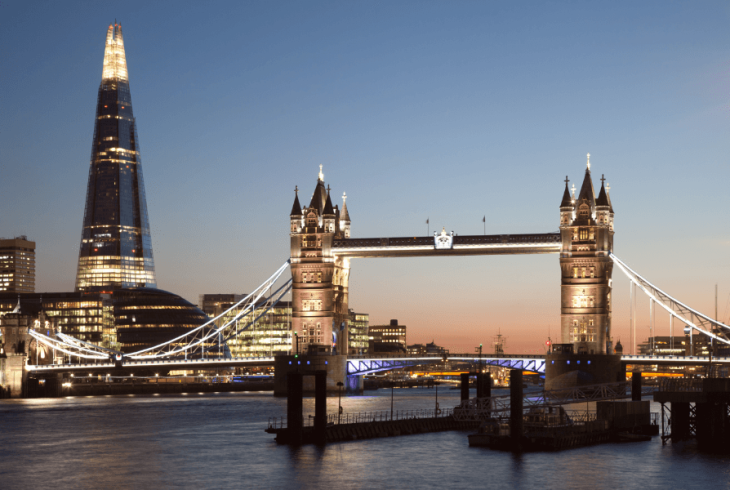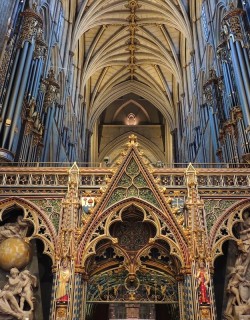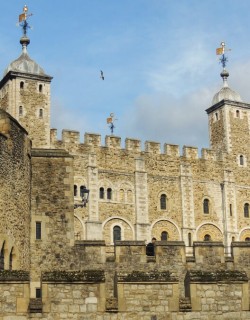In the heart of London, where the River Thames meanders its way eastwards through the bustling city and towards the distant sea, stands an iconic symbol of British engineering: Tower Bridge. With its majestic towers, elaborate neo-Gothic Victorian design and ingenious raisable central span, Tower Bridge is equal parts aesthetic landmark and functional marvel. It’s a must-visit on any trip to London. Join us as we delve into the story of this remarkable river crossing!
The story of Tower Bridge begins in the late 19th century. London's population was exploding, and the creaking infrastructure of the city was struggling to meet the demands of the rapidly expanding city. London is divided in two by the snaking Thames, and as the city continued to expand southwards and eastwards, the need for a new river crossing in the east of the city was becoming ever-more evident.
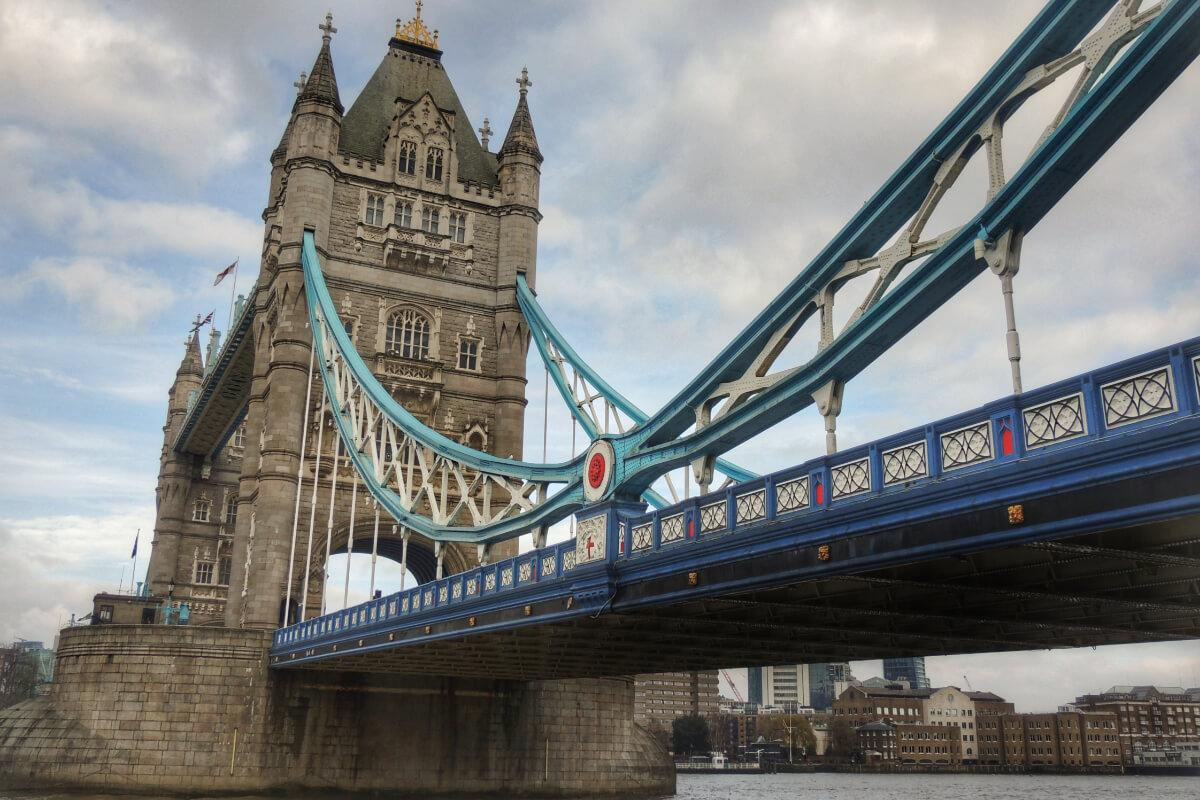
A conventional bridge was unsuitable, as it would not allow for the passage of large ships arriving at the city port of the Pool of London a short way to the west. And so in 1877 the City of London Corporation launched a special commission to study the issue. The brief was to design a bridge that was both aesthetically pleasing (always a prerequisite for the grand engineering projects of Victorian Britain) and that could accommodate river traffic while allowing road and pedestrian access to the Tower of London.
Over 50 plans were submitted to the commission proposing various solutions to the problem, but a winning design wasn’t chosen until 1884, when a team headed by architect Sir Horace Jones and engineer Sir John Wolfe Barry were given the go ahead to start work on the project. After an Act of Parliament was passed giving the green light to the works, construction commenced in 1886, and the bridge was officially opened to the public on June 30, 1894.
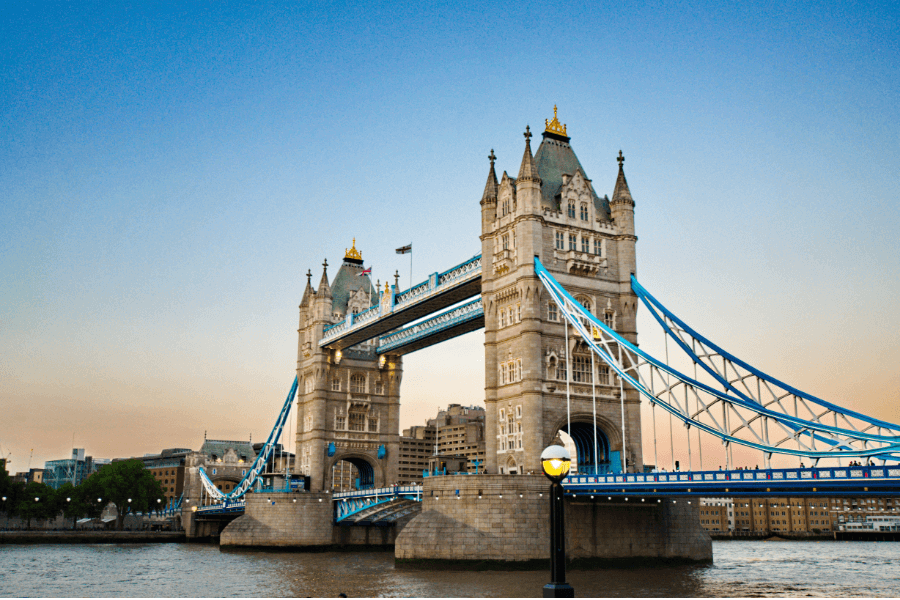
The key aspect of Jones and Barry’s design was the twin bascules, or leaves, that constituted the bridge’s central section. These could be raised on demand via a complex mechanical operation, meaning that large ships could continue their passage westwards along the Thames unobstructed.
The commission’s design brief stipulated that the bridge be constructed in the neo-Gothic architectural idiom that was so beloved of Victorian sensibilities, and which would fit in with the medieval aesthetic of the nearby Tower of London. Indeed, the two massive and elaborately ornamented towers that frame the bridge, each standing 213 feet tall and clad in Cornish granite and Portland stone, immediately bring to mind the great building projects of the Middle Ages. Looks can be deceiving, however.

The towers relied on a very modern building material for their structural integrity - over 11,000 tonnes of hidden steel keep them standing. Take a walk across the high-level walkways that link the two towers to enjoy breathtaking views of London's skyline, the river Thames far below, and, thanks to its glass floor, the secret mechanics of the bridge. In recent years, the high-level walkways have been transformed into an exhibition space, showcasing the bridge's history, construction, and the people who have played a role in its maintenance over the years.
Tower Bridge's bascules have been raised countless times over the past century for river traffic, including during World War II to allow massive Royal Navy warships to patrol the Thames. But one occasion stands out: in 1952, a miscommunication led to the bascules being raised while a double-decker bus was still traversing the bridge. The bus driver, Albert Gunter, made the split-second decision to accelerate and jumped the rapidly-widening gap, saving the lives of his passengers. Hailed as a hero in the popular press, he received a £45 reward and a week’s free holiday in Bournemouth as recognition for his bravery.
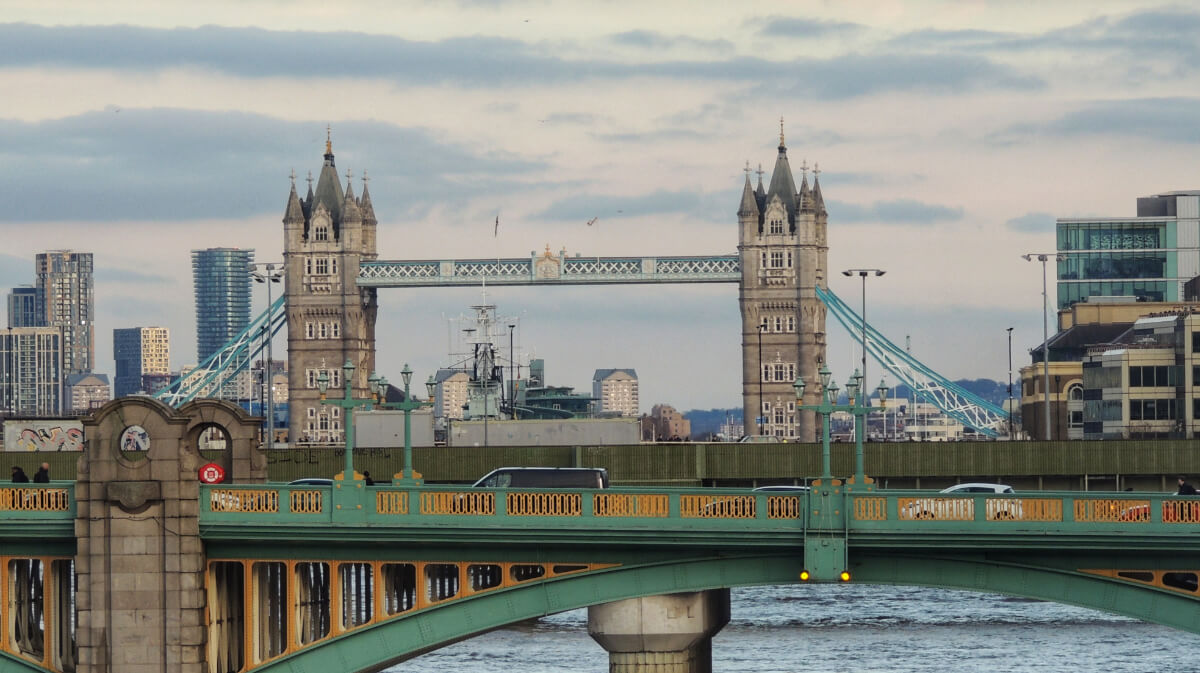
Tower Bridge is certainly London’s most iconic river crossing, but it’s often confused by visitors with the much more workaday London Bridge further west. So much so that an oft-repeated urban legend asserts that an American businessman purchased London Bridge, mistaking it for its more illustrious neighbour back in the 1960s. There is a kernel of truth to the tale: back in the 1960s, London Bridge was fast becoming unfit for purpose, unable to handle the increasing volume of traffic that passed over it each day.
Instead of simply demolishing the bridge to make way for its replacement, however, London municipal authorities incredibly managed to sell it to the enterprising American businessman Robert P McCulloch, who had the bridge transported brick by brick across the Atlantic to Lake Havasu City in Arizona, a town recently founded by McCulloch in the middle of the Mojave desert. McCulloch’s apparently crack-pot scheme proved a great success, and thanks to the bridge’s notoriety Lake Havasu went from strength to strength. There’s nothing to the rumour that McCulloch was duped into thinking he was purchasing Tower Bridge, however - the savvy operator knew exactly what he was doing!
How to Get There
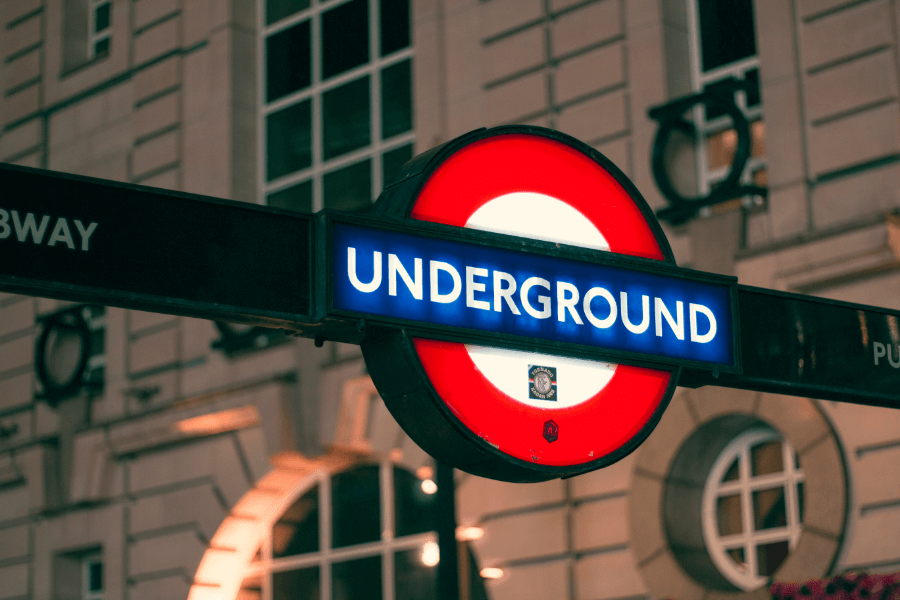
Getting to Tower Bridge on public transport is easy, as it's well-connected to London's public transportation system. You have several options, including the London Underground (subway), buses, and the Docklands Light Railway (DLR) and water buses.
The closest London Underground station to Tower Bridge is the Tower Hill station, which is served by both the Circle and District Lines. After arriving at Tower Hill station, follow the signs for Tower Bridge, which is a short walk away.
Several bus routes pass near Tower Bridge, including 42, 78, and 343. These buses stop at various points around the Tower Bridge area.
If you're travelling from the Docklands area, you can take the DLR to Shadwell station. From there, you can transfer to the London Overground or walk to Tower Bridge (approximately a 15-20 minute walk).
For a unique and scenic approach, you can take a Thames Clipper river bus to Tower Millennium Pier, which is located near Tower Bridge. Thames Clippers run along the River Thames and offer stunning views of London's landmarks.
The best way to approach Tower Bridge, though, is the simplest. If you're coming from central London, you can enjoy a lovely walk along the Thames River path to reach Tower Bridge. Follow the signs for the Tower Bridge or simply follow the riverbank until you arrive. You can’t miss it!
If you’d like to learn more about Tower Bridge and see this iconic London landmark in person, then be sure to join our tour of The Tower of London, Borough Market and Tower Bridge. Through Eternity Tours offer expert-led guided itineraries across the English capital and beyond. Check out the full range of our services here.
